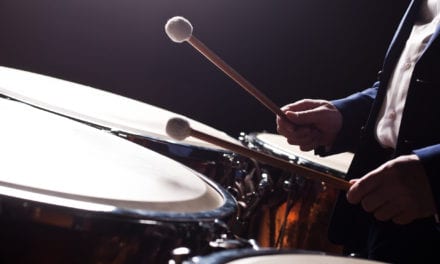By Ken Dattmore
As technology transforms the classroom in all ways, traditional string programs are opening up to styles outside of the classical realm. Many of these styles allow for the use of instruments beyond the traditional acoustic instruments. Electric string instruments, while having been around for decades, are finally reaching the level of affordability and quality that allow them to be used in an educational program. Here are some things to consider when adding an electric instrument component to your traditional program:
Cost
As is always the case, cost is the first consideration. Careful due diligence should be undertaken when selecting electric instruments for your program. Go too inexpensive, and you’ll run the risk of having instruments components fail. For the most inexpensive of electric instruments, there is little or no manufacturer support or warranty. On the other hand, spend too much, and you may be paying for features designed for professional players which won’t be needed in your program. Dealing through a reputable music dealer and trusted manufacturer is a must when starting out. Again, be sure there is a warranty before you purchase.
Instrumentation
Starting with just one or two instruments is a feasible beginning. It gets the instruments into the hands of the student and can start the interest that will lead to continued growth in the program. Ideally, a quartet of instruments (2 violins, viola, and cello) offers a performing group right out of the box.
Since you have an educational program, pay special attention to the design of the instruments. Students switching between acoustic and electric instruments should have as seamless an experience as possible. Try to avoid instrument designs that don’t conform to traditional designs of their acoustic counterparts. Guitar shapes, obscure designs, and fingerboard frets, while giving an exciting look to the instrument, can work against posture and technique. These are things which cannot be sacrificed with an advancing student.
Design is also a consideration in servicing and repair. The more closely the electric instrument conforms to the standards of an acoustic, the more easily it can be serviced and repaired by a local luthier or repair technician. Look for the same components you would find on your acoustic instrument. Ebony pegs, tailpiece, fingerboard and chinrest, as well as the use of your preferred shoulder rest, make maintenance so much easier and prolong the life of the instruments in your program.
“today we are living in the “Golden Age” of the electric violin.”
Repertoire
In the early stages of electronic strings development, educators were faced with the challenge of what to play. There were not many compositions or arrangements available. As time went on, the doctrine of “If you build it, they will come” took over. Today there are numerous composers, arrangers, and publishers supplying works for electric string ensembles. Original compositions as well as arrangements of current pop tunes are readily available, with more coming each day. Then again, there is always the tried and true “garage band” method of listening to the radio and figuring out the tune all on your own. This is one of many ways you can test the creativity of your students.
Sound Reinforcement
Perhaps the most frightening part of an electric string program comes with the realization that the instruments need to be plugged in and amplified. The mass of cables, switches, knobs and speakers can generate technophobia in the best of educators.
Keep in mind that this can be overcome by beginning small. Single amplifiers can be used as a starting point. Down the road, expansion into mixing boards becomes an educational opportunity for all. I’m reminded of a high school program that had a student who was the full time soundman for the electric ensemble. Here was this enthusiastic student that couldn’t play a string instrument, yet he was an active participant in the orchestra program and was receiving a grade and credit just like the rest of the group.
Effects Processing
Yet another daunting area for the string educator to explore is implementing sound processing in the electric string ensemble. In any visit to a local guitar shop, you will find walls filled with multi colored effects boxes with all kinds of knobs and pedals. You will find choice upon choice of gadgets designed to distort, echo, loop and alter sound in any way that can be imagined. What is best for your ensemble? Again, it is best to begin small. A single pedal with a basic distortion can be shared among the members of the group. As time goes on students will explore and their own creativity will lead the way.
So here for you is a basic launch point for beginning an electric string ensemble in your orchestra program. As was once the case with acoustic string instruments hundreds of years ago, today we are living in the “Golden Age” of the electric violin. It is an exciting time for educators and students to explore and be a part of the evolution of stringed instruments and string education. For certain, it is a brave new world!



